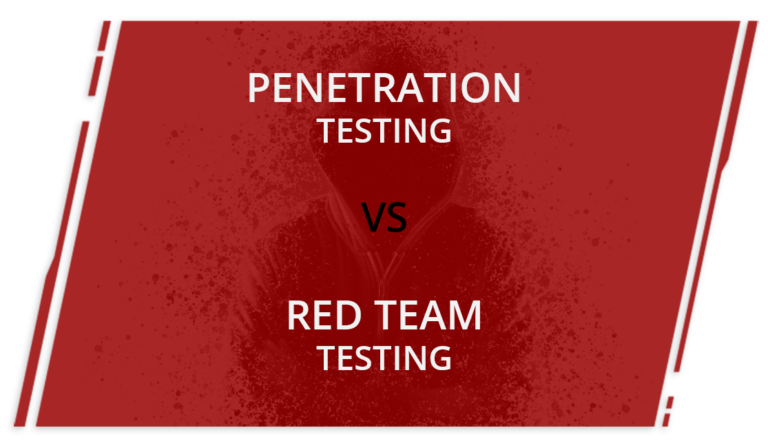
Red Teams are specialized groups of security professionals that simulate malicious attacks and attempt to breach the defenses of organizations in order to detect any flaws or weaknesses.
With custom-tailored attacks targeting your company’s crown jewels using any adversarial means available, Red Teams assess an organization’s security measures with the intent of providing actionable steps to strengthen security postures.
This method of testing is seen as a way to supplement other approaches such as penetration testing and vulnerability scanning. Through this, organizations are able to gain an honest understanding of their security posture which can be used to further develop their defenses and ultimately prepare for any potential threats.
Advanced Persistent Threat as a Service
Red Teaming is an adversarial simulation where stealth and evasiveness are employed to challenge all defenses, monitoring, and response capabilities.
The ultimate QA of an entire security program including SOC/MSSP, email gateway security, endpoint detection, response, and incident readiness.
CyberMaxx studies APT reports to recreate and customize a range of advanced real-world tactics, techniques, and procedures.

What Does the Red Team Do
The CyberMaxx Red Team consists of seasoned cybersecurity veterans with years of experience compromising enterprise environments. During the comprehensive scoping phase, crown jewels are defined and rules of engagement are established. Typically Red Team customers keep the test secret wanting to test defenses without prior warning.
CyberMaxx develops a test plan and schedules phases including open source intelligence (OSINT), and reconnaissance – preparing multiple attack paths depending on what’s learned during discovery. Decoys and false flags are employed to deter monitoring and response. Upon completion of the “door-busting” phase, time is allocated for the “Assumed Breach” phase where CyberMaxx is positioned on an internal resource and attempts lateral movement and internal penetration.
Not all Red Teams are created equal.
In addition to CyberMaxx’s team experience, another unique feature is that a Purple Team phase is built into every project plan. No one benefits from a “gotcha” report unless a detailed analysis is provided documenting what took place and why any attack steps were successful. The Purple Team phase is collaborative where individual attack unit tests are reproduced alongside the client’s SOC to improve visibility and detection rules mapped to MITRE ATT&CK. The measurable outcome of a CyberMaxx’ Red Team engagement is improved defenses and detection.
Practical & Strategic Benefits
- Measure your security controls against a full-force attack
- Gain experience and insight into real-world attacks
- Increase your organization’s ability to identify and respond to incidents
- Identify and fix vulnerabilities before an attacker exploits them
- Real-world SIEM log source gap analysis

Red Team Testing VS. Penetration Testing
Red Teaming
- Red Teaming tests all defense and response mechanisms using any adversarial means necessary
- Engagements are typically 3-8 weeks long.
- Focused on moving deeper/laterally to obtain “crown jewels” or high-value targets
- Covert attack methods to masquerade/hide malicious activity from defensive controls
- Knowledge of Red Team activities is generally restricted to higher management to properly assess an organization’s response and awareness
- An effort to evade detection and attribution. Multiple proxies and domains with high reputations are used to fly under the radar. Full dry rehearsal in a lab environment with a comparable security stack as a target.
Pentesting
- Pentesting is a point-in-time review and exploitation of vulnerabilities within well-defined guidelines
- Pentesting engagements typically last 1-2 weeks
- Focused on breadth.
- Typically no attempt to hide or mask attack activity

Red Team Benefits
- Improved Security: In order to increase protection and reduce the possibility of a security breach, Red Teams assess weak spots and identify potential vulnerabilities. This helps organizations determine how to best fortify their system from malicious activity.
- Increased Awareness: Conducting a Red Team assessment can help heighten understanding among staff and key stakeholders.
- Realistic Simulation: Unlike penetration testing, which is a typical security testing method, a more accurate reflection of potential real-world attacks can be gleaned from performing a Red Team assessment. This approach offers superior results due to its simulation of actual attack scenarios.
- Continuous Improvement: Regular Red Team assessments help organizations stay ahead of the curve when it comes to security threats, enabling them to adjust their defensive measures accordingly.
- Evidence-based Decision Making: Red Team assessments provide organizations with data and evidence they can use to make informed decisions about their security investments.
- Compliance: Red Team assessments can help organizations meet regulatory and industry compliance requirements such as PCI DSS, HIPAA, and NIST.
- Third-party Validation: Organizations can benefit from relying on a third-party to provide an objective assessment of their security posture with the aid of a rigorous Red Team evaluation. This outside confirmation gives stakeholders greater peace of mind and helps mitigate exposure to risk.
